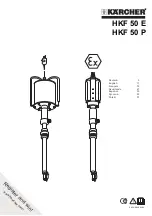
Functions of the board APCI-3xxx
(standard)
36
Data acquisition with the
APCI-3xxx
is based on a time-multiplex system.
The board is equipped with a single A/D converter to which the channels are
led through an analog multiplexer.
By switching from one channel to another, the output capacity of the
multiplexer must be reloaded with the new value.
Therefore, a certain delay occurs from the moment the converter switches to
a new channel and the moment the A/D converter starts.
This time delay corresponds to the settling time of an end value. This value
depends on the resolution of the acquisition. (e.g.: 0.01 % at 12-bit).
The delay time depends on the following factors:
-
Settling time of the amplifiers, approx. 3.5
μ
s (at 20 V interval)
-
Maximum voltage bounce from one channel to another
-
Source impedance of the sensors
-
Filter option
Input impdance = 10
12
Ω
|| 5 nF (differential input)
You can set this settling time (conversion time) in steps from 1
μ
s between
5
μ
s and 65535
μ
s. This is set through the driver.
8.2.2
Voltage ranges
The analog input ranges (0..10 V,
±
10 V, 0..5 V,
±
5 V, 0..2 V,
±
2 V, 0..1
V,
±
1 V and optional 0-20 mA) and the gain can be configured through
software.
This enables to switch different voltages (or rather currents) for different
channels to use the best resolution of the A/D converter.
Please note: During the switching of the voltage range from unipolar to
bipolar or from bipolar to unipolar there is a longer settling time of the
measuring chain.
8.2.3
Analog input switch (differential inputs)
The input impedance is the input resistance (10
12
Ω
) of the PGA and the
connected capacities (C
1
and C
2
).
Input impedance= 10
12
Ω
|| 5 nF














































